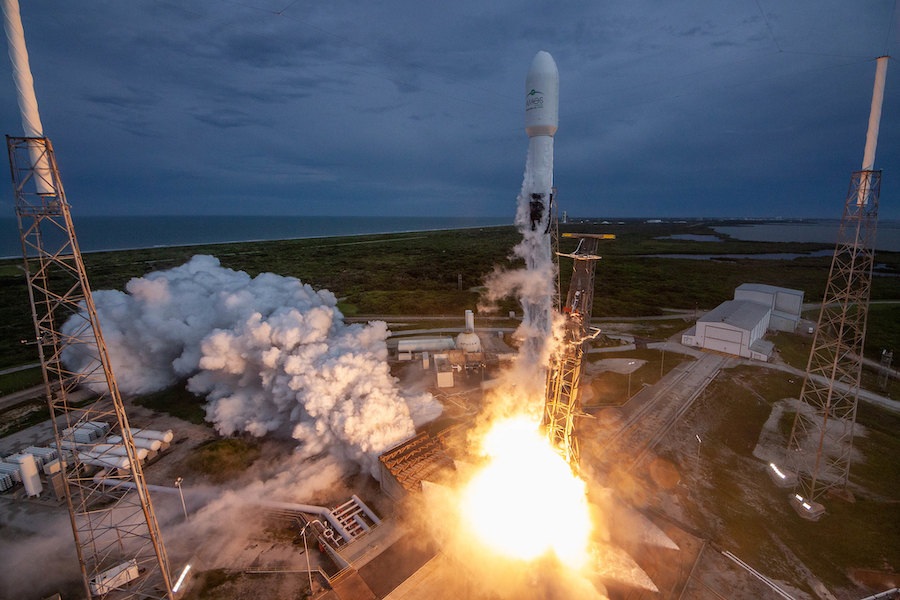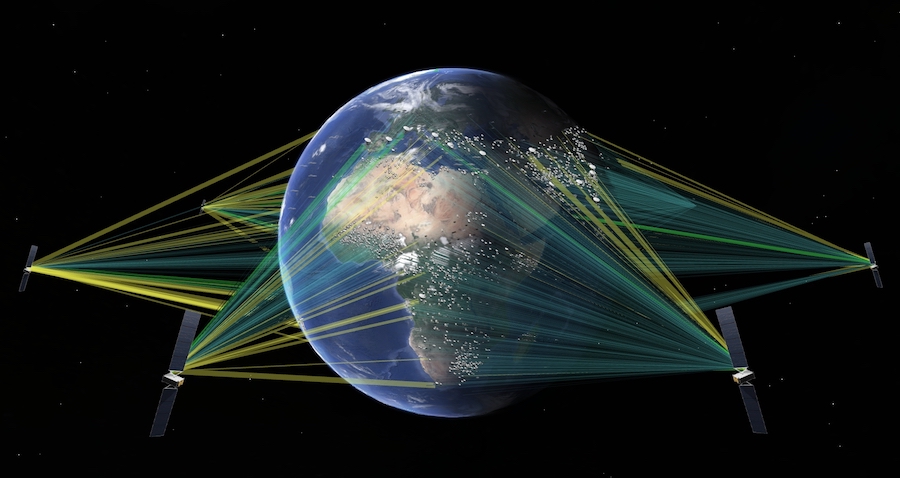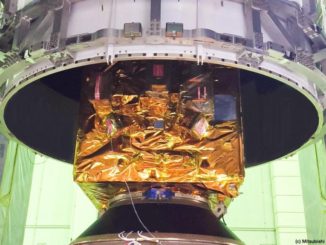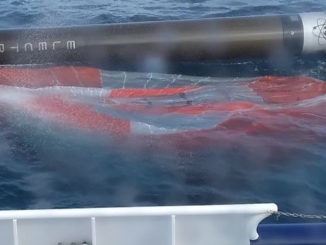
Two SpaceX Falcon 9 rocket launches will loft seven high-throughput broadband satellites for SES’s O3b mPower constellation in 2021, SES announced this week.
The two launches are expected to take off from Cape Canaveral and deliver the seven satellites into an elliptical transfer orbits on the way to operating positions more than 5,000 miles (8,000 kilometers) over the equator.
Four of the Boeing-built broadband satellites will launch on one mission, and three on the other, SES said. Officials have not determined the order of the launches.
The O3b mPower constellation, first announced in 2017, will expand on SES’s O3b network providing connectivity to ships and remote locales from a unique equatorial medium Earth orbit.
“Momentum in the O3b mPower ecosystem is accelerating quickly as we continue to build the right partnerships to bring this massively innovative communications system to market,” said Steve Collar, CEO of SES. “Working with SpaceX as our launch provider is fitting because in the last seven years we have already jointly made multiple revolutionary industry advancements that make access to space innovation more cost-efficient and unlock new opportunities in critical markets.”
The two Falcon 9 launches to kick off SES’s O3b mPower fleet will mark the Luxembourg-based satellite operators return to SpaceX after six missions between 2013 and 2018. SES was the first commercial satellite operator to launch a payload with SpaceX, and the operator was the first customer to launch a satellite on a reused Falcon 9 booster.
“We are delighted to have SpaceX as partners for our historic O3b mPower launch, and together, we will extend high-performance connectivity to all who have limited access to it today,” Collar said.
The first 20 O3b satellites launched four at a time on Russian-made Soyuz rockets from French Guiana on missions managed by the French launch service provider Arianespace. The first-generation O3b satellites were manufactured by Thales Alenia Space of France.
SES is going with different spacecraft and launch contractors for the next round of O3b satellites.
“We are pleased that SES has once again selected Falcon 9 to launch their powerful, groundbreaking communications system,” said Gwynne Shotwell, president and chief operating officer at SpaceX. “SES has been an important partner for SpaceX – fully supporting our efforts to make rocket reusability a reality. We are proud to play a part in SES bringing revolutionary connectivity solutions to the market.”

SES operates one of the largest fleets of conventional geostationary communications satellites, located roughly four times farther from Earth than the O3b fleet. Unlike some of its competitors, SES has not pursued a constellation of small broadband satellites in low Earth orbit — an orbital regime a few hundred miles above Earth — but has focused on marrying the capabilities of its sizable geostationary fleet with a low-latency Internet network in medium Earth orbit.
Each of the seven O3b mPower satellites will weigh less than 2 tons. The satellites will employ electric propulsion to reach their final operating orbit after deployment into a preliminary transfer orbit by the Falcon 9 rocket, an SES spokesperson said.
Like the existing O3b satellites, the mPower spacecraft in an equatorial will each customers across 80 percent of the Earth’s surface, excluding high-latitude polar regions. The Federal Communications Commission last year approved a request by SES to sell satellite communications capacity from additional O3b mPower platforms flying in inclined orbits, giving the system global reach.
A single O3b mPower satellite, each with the ability to form more than 4,000 user beams, will have 10 times the capacity of the current O3b satellites, according to SES. The initial seven satellites are expected to provide 10 terabits of total throughput.
Email the author.
Follow Stephen Clark on Twitter: @StephenClark1.



